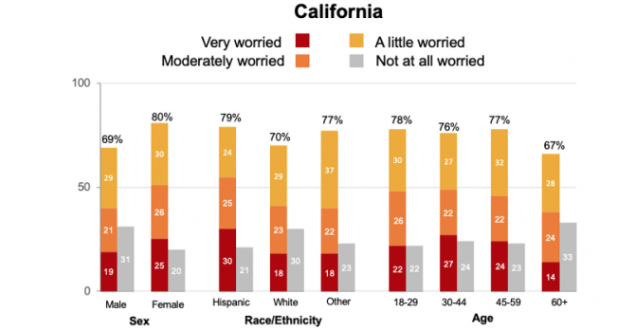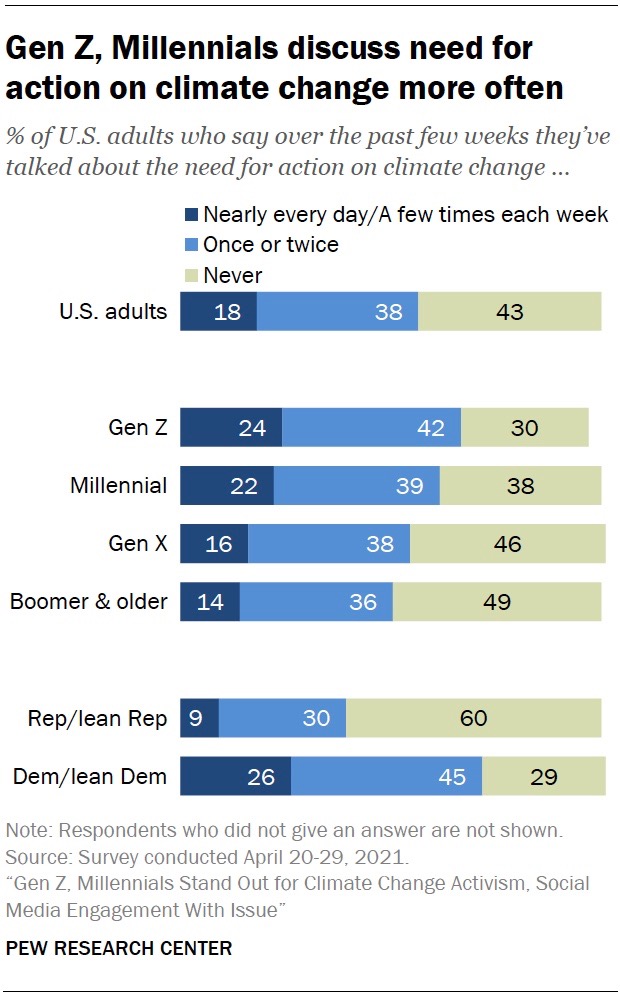Resources
Search below for resources covering the intersection of climate engagement, social science and data analytics.
RESULTS
Why Intersectional Stories Are Key to Helping the Communities We Serve
Many people communicating for social change are exploring how to tell diverse and inclusive stories that center marginalized communities while building understanding about how inequality persists. Intersectionality is an important tool to help us tell great stories that help us understand systemic issues. Five guiding principles to telling intersectional stories: Show, don’t tell; Provide historical context; Uplift the voices of marginalized people; Tell whole stories; and, Radically reimagine the world.
Anthropocene Alliance organization database & coalition
This is a searchable database & coalition of community-based organizations fighting for climate and environmental justice, who have been directly impacted by "climate change and environmental abuse". It is searchable by impact (flooding, wildfires, water contamination, and air pollution) and resilience strategies such as green infrastructure, renewable energy and affordable housing. The central coalition organization provides "organizing support, scientific and technical guidance, and better access to foundation and government funding" to member-organizations. 92 organizations currently exist in the database/coalition across 32 U.S. states and territories (as of July 2021).
Advocacy messages about climate and health are more effective when they include information about risks, solutions, and a normative appeal: Evidence from a conjoint experiment
A good formula for leveraging health messaging for climate advocacy: Tell people about the health consequences of climate change, health benefits of climate solutions, and include a call-to-action. This experiment found that each of these categories was worth including in a message to help motivate Americans to contact Congress. Within each of these categories, a variety of specific types of information were tested, with the most effective overall combination being a message that first described the negative impacts of climate change on air quality, then explained how transitioning to clean energy will benefit people’s health, and ended by explaining that most Americans support this solution, and many are taking action to advocate for it.
End of the Line: Environmental Justice, Energy Justice, and Opposition to Power Lines
Opposition to energy infrastructure is often labeled by developers as NIMBYism, but frontline communities have legitimate concerns and risk perceptions, or are left out of democratic decision making processes. In cases involving the siting of power lines, community groups are most successful in stopping the line or achieving remediation when they build broad coalitions of support within and outside of their communities and/or have government support at any level (including local, state or provincial, federal, and Indigenous).
Beat the Heat: Extreme Heat Risk Perceptions & Air Conditioning Ownership in California
Using data from the Heatwave Risk Perceptions map, researchers found that:
- Women in California are more worried than men about the risk of extreme heat events; and non-White Hispanic residents are more worried than respondents who identified as “White” or “Other"
- Even though the elderly are more vulnerable to heat, we also found that older populations are the least worried about these threats
- Three times as many Democrats (27%) as Republicans (9%) are “very worried” about the local occurrence of extreme heat waves
- Fewer Hispanic respondents (48%) have central AC compared to White, non-Hispanic respondents (58%). Respondents who are homeowners (59%) are more likely to have central AC than renters (39%).
Climate Change in Your Backyard: When Climate is Proximate, People Become Activists
As climate change is perceived (or experienced) to be more proximate, people are more likely to take political action. A survey experiment of Californians found an 11% increase in climate activism (message writing to policymakers) among respondents who were primed with messages emphasizing the temporal and physical proximity of climate vs. the placebo group.
Research findings suggest that climate organizers should:
- Frame climate change in a way that reduces psychological distance by using the present tense and talking about it as issue that is happening "here and now"
- Avoid overly-negative messages which can de-motivate action by reducing efficacy
- Focus on the concrete actions that will help solve the problem
Poll: Floridians want federal infrastructure plan to deal with climate change
Three-quarters of Florida respondents support funding “natural infrastructure” (solutions to reduce flood risk, such as restored beaches, wetlands and marshes) as part of the American Jobs Plan. Natural infrastructure solutions were supported by 86% of respondents, including 82% of independents, 81% of Republicans, 87% of coastal respondents and 88% of inland respondents. 89% of respondents supported preventive measures to reduce the impact of natural disasters before they occur. There was little divide among rural and suburban respondents. 85% of suburban respondents supported preventative measures, compared to 84% of rural respondents.
Poll: Gen Z, Millennials Stand Out for Climate Change Activism, Social Media Engagement With Issue
Target Millennials and Gen Z. This survey finds that people born 1981 to 1996 (Millennials) and after 1996 (Generation Z) are especially anxious, motivated and angry about climate change. They talk about the issue more, engage with climate content more on social media, and are more likely than older Americans to take climate action. The survey, conducted in April 2021, also reveals that 50 percent of Americans experienced extreme weather in the past year.
Implementing the Portland Clean Energy Fund: Challenges and Opportunities
In 2018, the Portland Clean Energy Fund (PCEF) campaign secured a landslide ballot measure victory in Portland, establishing a multi-million dollar municipal fund that addresses climate, economic, and racial justice by providing funding for renewable energy projects, job training and apprenticeship programs, and regenerative agriculture. Last year, we got to look “under the hood” with PCEF Steering Committee members to cover the history of the campaign, what PCEF does, and how the community-led coalition was able to win at the ballot box.
In a follow-up webinar, we came back together to share new developments on the victory and cover topics including:
- How has PCEF been implemented, and how is it helping the community build political power?
- What lessons have been learned since winning the legislation, and what challenges and insights does that bring?
- What would it take to replicate this winning model in your own context and municipality?
A broader mind: concern with other humans, equality, and animals
To create pro-environmental behavior change, use targeted messages that activate one of three basic values: concern for other humans, for equality, and for other living things. This resource reviews the research on these three values as motivators of sustainable behavior and provides concrete recommendations for how to activate them:
• To activate prosociality, or concern for humans, emphasize climate change’s harm to future generations.
• To activate egalitarianism, or concern about equality, emphasize climate change’s harm to those suffering the most (and who often have contributed the least to climate change), such as people living in hot and vulnerable climates.
• To activate concern about animals, emphasize climate change’s harm to animal life. Research shows that this even works when discussing harm to insects!
Pagination
- Previous page
- Page 4
- Next page




